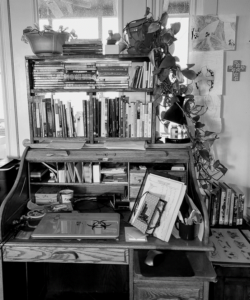The Paris Architect, by Charles Belfoure is set at the time of World War II in occupied Paris. The main character, Lucien Bernard, is an architect in desperate need of work. Lucien is on his way to interview for a position with a wealthy industrialist Auguste Manet. Manet is building munitions factories and plants for the Reich.
In the opening scene of the book a German Officer shoots a Jew on the streets of Paris. Lucien is so close that the blood spatter from the shot gets on Lucien’s only good suit. The reader doesn’t know what branch of service the German officer serves only that his uniform is green and black.
The Paris Architect, teaches the reader in the first pages of the book. The reader learns that the German soldiers are ruthless but polite, Lucien has little or no concern for the fate of the Jews, Lucien cares more about his clothes than the dead man, and he cares more about presenting a calm confident air to Manet.
The opening is startling, brutal, and plays fair with the reader and the main character of the book. It is a satisfying opening and the reader is prepared for violence and the upside-down world of politeness in the face of evil.
In subsequent chapters Lucien is hired to work on the design and construction of munitions factories for the Reich only after agreeing to design hiding places in plain sight for refugee Jews. Both of these out of synch requests come from the wealthy industrialist Auguste Manet.
The premise that a great industrialist with such talented carpenters, draftsmen, and builders at his disposal should bother with an architect for his plans to hide Jews didn’t ring true. The construction technicalities of that effort were never developed and might have been used to deepen the characterizations as well as make more believable and intense that narrative. The noise, the deconstruction and reconstruction, getting supplies into buildings and debris out of buildings right under the Reich’s nose, all of this would have gone a long way to making this a strong re-readable novel for many readers.
Belfoure’s field of study is architecture and real estate with a specialty in historic preservation. Belfoure studied the Priest Holes of 16th century England and began thinking of a plot which became The Paris Architect. The priest Holes of England are a fascinating study and would have made a remarkable work of historical fiction. In translating the circumstances of England’s hiding holes to Paris during the Occupation, Belfoure loses depth and character. He trades a real situation for an inserted fiction. He also trades the real character of the carpenter Owen, for the shallow fictitious character of Lucien. Finally, Belfoure also trades a lesser understood setting with wonderful pathways for fictionalization for a setting with choices that are too easy and simplistic for heightening tension and plot. Belfoure makes little attempt at showing us the actual hiding places, how they are built, who is in on it. Being with Lucien as he sees his piano hinge going into place and the difficulties of actually fitting that hinge would have made for strong characterization of Lucien. Belfoure adequately explains that Lucien wants little or nothing to do with the actual construction, but it leaves a false ring in the explanation’s wake. The hiding places of The Paris Architect magically appear by magical carpenters within hours of receiving a set of drawings that equally only took hours to prepare. The lack of details left the book sagging a bit in the middle and Lucien’s character flat. To read an alternate point of view read Ar. John McLean’s in depth and thoughtful review. https://johnmcleanarchitect.com/the-paris-architect.htm.
The book takes a nice turn in the end when Lucien connects with Bette and adopts Pierre. The final scenes were satisfying, and Lucien finally grew into an ethical character. Major Dieter Herzog is a minor character with an important role in the book. His character was well rounded and after finishing the book, it is worth effort to revisit the scenes he occupies.
Read this book for a satisfying fast paced read of WWII fiction. Read it for the transformation of Lucien in the end and read it for the minor characters of Dieter Herzog and Pierre. Thanks for reading.


 I am a mother, author, engineer, farmer, occasional actress, and incurable dog-sap. I think things and write things and embarrass myself often.
I am a mother, author, engineer, farmer, occasional actress, and incurable dog-sap. I think things and write things and embarrass myself often.